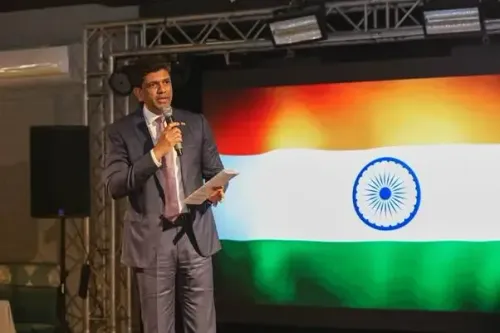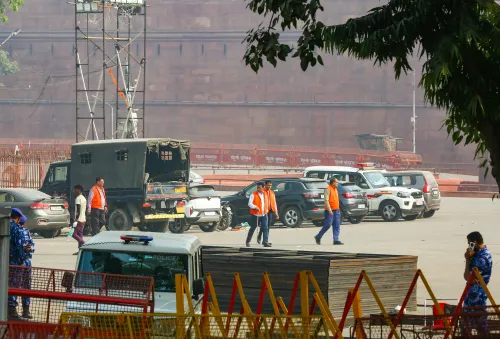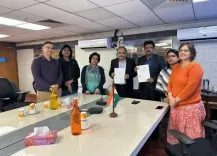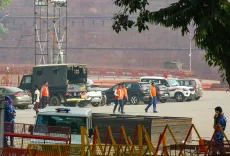Is Delhi-NCR Pollution Stuck in the 'Severe' Zone?
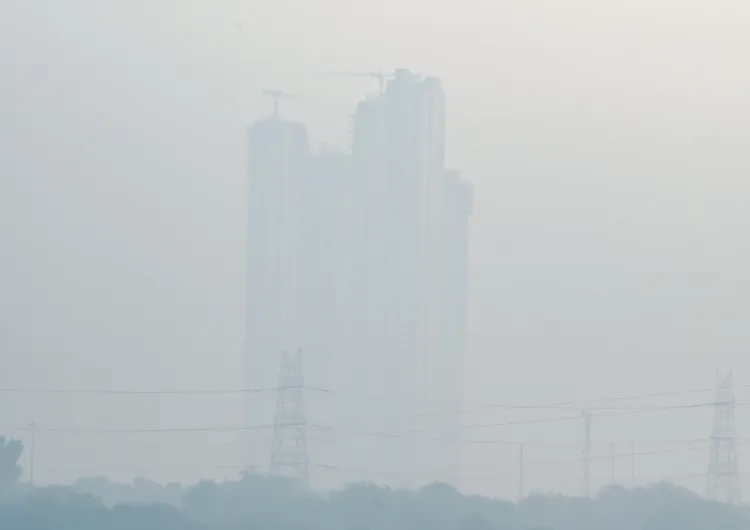
Synopsis
Key Takeaways
- Delhi-NCR pollution levels are alarmingly high, remaining in the 'severe' category.
- Several areas reported AQI levels exceeding 400, indicating hazardous air quality.
- Strict pollution control measures, including bans on construction, are now in effect.
- Schools have adapted to hybrid classes due to health concerns.
- Public protests are highlighting the urgency for stronger air quality interventions.
New Delhi, Nov 19 (NationPress) The pollution levels in the Delhi-NCR region have remained firmly in the 'severe' category on Wednesday, as a thick layer of smog continues to envelop the area, exacerbating the ongoing air quality emergency.
Multiple monitoring stations have reported alarming air quality indices, with Wazirpur registering a staggering 578, Knowledge Park-5 in Greater Noida at 553, and Bawana reflecting some of the most hazardous conditions.
Several areas in Noida and Greater Noida experienced AQI levels soaring beyond the 400 threshold, including Sector 125 at 434, Sector 62 at 367, Sector 1 at 411, Sector 116 at 440, and Knowledge Park 3 at 423.
In Delhi, Jahangirpuri recorded an AQI of 442, while areas such as Chandni Chowk, Ashok Vihar, DTU, and Vivek Vihar reported AQI figures between 430 and 440, based on data from the CPCB's Sameer app.
Other localities, including Sonia Vihar, Rohini, RK Puram, Punjabi Bagh, North Campus, Nehru Nagar, Narela, Mundka, and Anand Vihar, also documented AQI readings above 400, indicating perilous air quality throughout the capital.
The India Meteorological Department has predicted predominantly clear to hazy skies for the upcoming 48 hours, offering little immediate relief from the intensifying smog.
On Tuesday, the Central Pollution Control Board released an evening bulletin, categorizing Delhi's average air quality as 'very poor', highlighting that several NCR cities, including Greater Noida and Ghaziabad, have plunged into the 'severe' range.
In response to the GRAP Stage 3 restrictions, various pollution mitigation measures have been implemented, such as halting construction activities, spraying water on major roadways, and imposing traffic regulations across the Delhi-NCR region.
Schools in the capital have transitioned primary classes to a hybrid format as a precautionary measure in light of the consistently hazardous air quality.
Recently, rising discontent over the deteriorating air quality has ignited anti-pollution demonstrations in the capital. Social organizations, student groups, and local residents have taken to the streets, demanding immediate intervention and stricter enforcement of regulations.


